2016-2017 Media Coverage
News & Feature Stories about ACH Foam Technologies & the Expanded Polystyrene (EPS) Industry
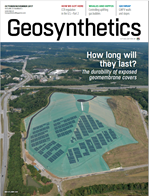 Geosynthetics
Geosynthetics
October-November 2017
The tram at Hidden Peak is where founder Richard “Dick” Bass envisioned The Summit, a high altitude guest services center and mountain restaurant with limitless views of spectacular surroundings. The vision was to provide non-skiers with panoramic mountain top views in a comfortable, secure space yet is in an environment that faces winds of up to 135 miles an hour and temperatures in the low negatives.
The Tram’s foundation represented a possible vulnerability. Backfilling with the excavated soil would potentially expose the foundation’s walls to lateral pressures caused by natural soil resettling after construction. “We didn’t want any additional loading in the form of settlement to be added to the tram’s foundation walls as the result of the new building,” says Tang Yang, Principal with GSBS Architecture.. “We developed a structural barrier between the foundation and the mountain by filling the void with EPS Geofoam blocks from ACH Foam Technologies. EPS Geofoam is a lightweight material with high compressive strengths and predicable performance.” Read More.
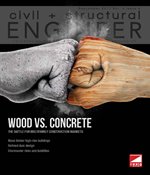 Civil + Structural Engineer
Civil + Structural Engineer
September 2017
Ed Bell Construcion was working on a highway rehabilitation project for the Texas Department of Transportation (TxDOT) in 2010 when Phillippee Falkner, Operations Manager, was presented with a rare opportunity. “The US 67 bridge over SH 174 outside of Cleburne needed to be rehabilitated and they asked Ed Bell to add it to our scope of work on the adjacent section of highway,” Falkner said. The bridge header was settling because deteriorating embankments at either end were causing the pavement to bunch up where the road connects to the bridge. TxDOT had already attempted to rehabilitate the embankments using traditional soil stabilization methods but moisture issues and settlement continued.
“Since traditional methods hadn’t worked, they asked us to do a side-by-side comparison of two different fill materials, sort of an R&D project,” Falkner said. Working with two different structural fills, Ed Bell’s assignment on the embankments was to plan and complete the work on each side of the bridge. They would also install electronic pressure monitors beneath the restructured embankments so any future settlement could be monitored independently on each side. TxDOT indicated it wanted to compare a kiln-processed lightweight clay aggregate and solid, lightweight geofoam blocks as alternative fills. On the surface, Falkner’s early expectation was that the aggregate materials would behave similarly to soil. Thinking about the geofoam block side, however, he had some concerns.
Read More.
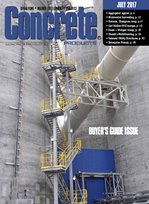 Concrete Products
Concrete Products
July 2017
Savvy builders know the true value of a building product must consider a combination of the purchase price, the installation cost and the possible long-term operational savings the product provides to the owner during its lifecycle. At Enterprise Precast Concrete of Texas, operations manager, Scott Davis is certain that a high-performance building envelope is one of the wisest investments that can be made on any commercial construction project regardless of client or purpose.
ACH Foam Technologies is currently supplying Enterprise with a steady stream of their Foam-Control 130 product for CarbonCast panels going into a new $1 billion data center for a well-known technology company building out more than 250,000 square feet of new space in Fort Worth, Texas. With operations and production responsibilities, both Arehart and Davis appreciate ACH Foam Technologies’ willingness to organize and develop detailed product numbering systems for each order to Enterprise’s specifications. Read More.
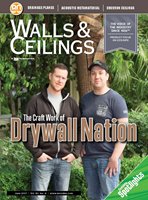 Walls & Ceilings
Walls & Ceilings
June 2017
Completed in the spring of 2016, Calacci Construction’s new, 15,800-square-foot office building was configured on two floors, with mechanical systems located in the basement. Thinking beyond initial costs, Calacci was interested in building strategies that would help him reduce operating expenses during Iowa’s hot summers and cold winters. The Calacci Construction building maintains a steady 57 or 58 degrees, circulating cooler air in summer and warmer air in winter. Along with the heat pump, the new building also benefits from a high performance thermal envelope, which helps maintain constant temperatures despite external conditions.
“We wanted a good tight seal on the building; we sourced all the materials from within 50 miles or so; we used recycled concrete and such; but for us it’s more about efficiency than being particularly green,” says John Calacci. Because the architecture combines a glass curtain wall with punched window masonry, a tight seal required a bit of precision in materials and workmanship. “To meet the new UBC building code, walls have to have a complete thermal break, so we needed a masonry cavity insulation. We chose ACH Foam Technologies for several reasons,” continues Calacci. “Of course, they are local, about 30 miles from here, but their products also come in a wide range of thicknesses, which really helped us fill in around some complex architectural detailing.” Working with their local White Cap representative, Calacci purchased 19,200 board-feet of Foam-Control PLUS+ 250 scored architectural insulation, which provides a mid 20s R-value.
Read More.
 Rocky Mountain Construction
Rocky Mountain Construction
June 2017
Snowbird Ski & Summer Report’s acreage is covered by an average of 500 inches of low-density “dry” Utah powder annually and accessed by a collection of 10 chairlifts and one aerial tram. The tram at Hidden Peak is where founder Richard “Dick” Bass envisioned The Summit, a high altitude guest services center and mountain restaurant with limitless views of spectacular surroundings. “The vision was to provide non-skiers with panoramic mountain top views in a comfortable, secure space yet is in an environment that faces winds of up to 135 miles an hour and temperatures in the low negatives. These are not everyday design challenges and that really speaks to what it takes to build on such a site,” states Tang Yang, Principal with GSBS Architecture.
The Tram’s foundation represented a possible vulnerability. Backfilling with the excavated soil would potentially expose the foundation’s walls to lateral pressures caused by natural soil resettling after construction. “We didn’t want any additional loading in the form of settlement to be added to the tram’s foundation walls as the result of the new building,” says Yang. “We developed a structural barrier between the foundation and the mountain by filling the void with EPS Geofoam blocks from ACH Foam Technologies. EPS Geofoam is a lightweight material with high compressive strengths and predicable performance.” While architects and engineers take comfort in ACH Foam Technologies’ Foam-Control Geofoam’s performance, builders often find it to be particularly well suited to difficult circumstances where a lightweight structural fill is needed.
Read More.
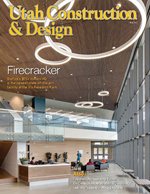
Utah Design & Construction
May 2017
The biggest issue on the Brigham City Bridge project was the natural geological conditions surrounding the site. The scope of work was to widen an existing highway overpass and improve the associated interchanges where I-15 and US 91 intersect to relieve traffic congestion. Offering only a single lane in each direction, traffic was frequently backing up and the interchange was identified as a place where UDOT was not keeping Utah moving. In response, the design team began investigating adding a sister bridge adjacent to the first as a means of increasing the roadway capacity; however, early analysis indicated that might cause more harm than good.
“Initially during design the plan was to put two additional lanes on a second structure adjacent to the first,” says Jeff Gilbert, a Geotechnical Engineer with Terracon in Salt Lake. “However, calculations on both settlement and global stability indicated that the weight of a traditional embankment built with soil for the second bridge would adversely impact the original bridge and we had to look for other options.” Other options included trying to improve the embankments’ foundation soil slope stability using driven piles or other intensive methods. Lead engineering firm, Michael Baker International, suggested using EPS geofoam as an embankment fill to reduce load settlement and decrease the driving force in the stability calculations. Lightweight and versatile, Foam-Control® geofoam is made from expanded polystyrene, a strong closed-cell material known for incredible compressive strength specification and determine how to configure the blocks to best support the weight of the roadway and live traffic loads while also being mindful of the budget.
Read More.
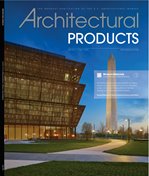 Architectural Products
Architectural Products
May 2017
Savvy builders know the true value of a building product must consider a combination of the purchase price, the installation cost and the possible long-term operational savings the product provides to the owner during its lifecycle. At Enterprise Precast Concrete of Texas, operations manager, Scott Davis is certain that a high-performance building envelope is one of the wisest investments that can be made on any commercial construction project regardless of client or purpose.
“I’m confident that there is no better value for a wall system than an insulated architectural precast panel,” says Davis, who has been in the construction industry for more than 18 years and now is the operations manager at Enterprise’s Corsicana, Texas office. Davis’ confidence in insulated precast panels is shared by general manager, John Arehart, who has seen the signifi cant evolution of architectural precast panels over a 29-year career.
ACH Foam Technologies is currently supplying Enterprise with a steady stream of their Foam-Control 130 product for CarbonCast panels going into a new $1 billion data center for a well-known technology company building out more than 250,000 square feet of new space in Fort Worth, Texas. With operations and production responsibilities, both Arehart and Davis appreciate ACH Foam Technologies’ willingness to organize and develop detailed product numbering systems for each order to Enterprise’s specifications.
Read More.
 Civil + Structural Engineer
Civil + Structural Engineer
May 2017
For even the most experienced professionals involved in designing, building, and maintaining roads, bridges, and highways there is always something new on the horizon. The biggest issue on the Brigham City Bridge project was the natural geological conditions surrounding the site. The scope of work was to widen an existing highway overpass and improve the associated interchanges where I-15 and U.S. 91 intersect to relieve traffic congestion. Offering only a single lane in each direction, traffic was frequently backing up.
In response, the design team began investigating adding a sister bridge adjacent to the first as a means of increasing roadway capacity; however, early analysis indicated that might cause more harm than good. The calculations on both settlement and global stability indicated that the weight of a traditional embankment built with soil for the second bridge would adversely impact the original bridge. Lead engineering firm, Michael Baker International, suggested using expanded polystyrene (EPS) geofoam as an embankment fill to reduce load settlement and decrease the driving force in the stability calculations.
“Using the geofoam blocks to support the bridge embankments was certainly a first for me,” said Betty Purdie, P.E., of Ralph L. Wadsworth Construction, despite a long tenure of tackling similar situations all over Utah. “When we were awarded the contract, I was excited to be working with a new material. Discovering geofoam manufactured by ACH Foam Technologies right here in Utah opens up a lot of new possibilities in the future.” Read More.
 Modern Contractor Solutions
Modern Contractor Solutions
February 2017
In retrospect, it sure seems simple, at least to the traveling public. Whether we are driving through a neighborhood or on a highway at speeds in excess of 70 miles an hour, the general public is largely unware of the time, effort, and expense that goes into creating safe, drivable roads. Yet, for the professionals who design and build our roads, the well-known complexities are both inevitable and ever-changing. Experienced designers and builders know each project is a new set of challenges and the solutions can only be found in the variables themselves.
Take the example of a roadway improvement project in Willowbrook, Illinois, a western suburb of Chicago where State Highway 83 crosses 63rd Street in a mostly commercial intersection bordered by a golf course on the northeast side. The scope of work was to replace a box culvert crossing beneath 63rd Street that was used to move water runoff from the golf course to a small pond on the south side of the road. With water draining from the golf course to the pond, the soil along the southeast side of 63rd Street had been settling for a long time. The result was a swampy area dividing the road from the pond and stabilizing the roadway base would require new fill material. Anselmo Presisto, P.E., the project manager with Greco Construction, was a bit surprised to see a line item for a product he’d never used before as Greco was putting their bid together. Foam-Control® expanded polystyrene (EPS) geofoam, was specified as a structural fill to stabilize the area between the pond and the road. Greco Construction hadn’t worked with the geofoam blocks either, despite having been in business for more than 70 years.
Read More.
 Modern Contractor Solutions
Modern Contractor Solutions
January 2017
With more than 22 years in the field and 11 years with Uline, Copenharve recently oversaw construction of a new 1,000,000-square-foot distribution center at Uline’s Wisconsin headquarters. Completed in January 2016, the facility known as W2 is a state-of-the-art distribution center that Copenharve believes is the best organized of all of Uline’s facilities. Since building on past experience is key to efficiency in so many ways, W2 is largely a duplicate of its predecessor W1, includingmany important design and construction material decisions.
One key decision on such a large, open floor plan facility was thermal insulation to guard against Wisconsin’s dramatic annual temperature swings. With summer temperatures reaching into the 90’s and as low minus 40 in the winter, cost-effectively maintaining Uline’s desired working conditions in such a large building relies on premium quality insulation. “ACH Foam Technologies is one of our customers and we investigated their rigid foam insulation for durability, firstterm vs long-term costs, and lifetime R-Value,” continues Copenharve. “We wanted materials that could be installed correctly once and not have to revisit the roof for a long time.”
Read More.
 Los Angeles Times
Los Angeles Times
January 2017
What better place than California to become a zero-waste state? It is the nation’s epicenter of innovation, where creative people think about economic and societal challenges and create unique solutions. As California sets about meeting its stated goal of 75% waste reduction by 2020, we must rise to the challenge by identifying substantive ways to get there and include a comprehensive education program.
Appealing as it might sound in a state that just voted to rid itself of those formerly ubiquitous plastic grocery bags, banning certain single-use food-service containers is not one of these substantive, innovative ways to meet California’s ambitious goal. Some cities would rather use the same path they have trampled before rather than doing the necessary work that would garner real progress, and The Times editorial board, sadly, agrees with them.
But before other cities and even state lawmakers rush to follow The Times’ advice, they should know that not all bans are worthwhile, and many do not result in less waste.
We at the Los Angeles Area Chamber of Commerce supported the plastic bag ban. There are reusable options that are accessible and viable and many in the business community supported the ban because it made sense for both industry and environmental groups. However, that is not the case for bans on single-use food-service products.
Read More.
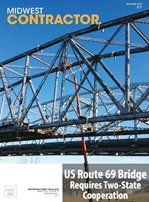 Midwest Contractor
Midwest Contractor
November 2016
For nearly 50 years Memorial Stadium has remained a fixture of K-State campus life for many programs. With the passage of time infrastructure deteriorates and eventually, if left unresolved, it will become a danger. Recognizing the stadium’s historic significance the University undertook a program to revitalize and repurpose Memorial Stadium in a multiphase process. On both the east and west side of the stadium, one interesting challenge K-State faced during early design discussions was what to do with the concrete risers above the revitalized structures. K-State’s landscape architecture department proposed transforming the majority of the seating into green roofs.
In response the team turned to an innovative commercial building product, ACH Foam Technologies’ Foam-Control EPS Geofoam. Expanded polystyrene (EPS) foam provided a lightweight material capable of filling in the slopes created by the rows of seating without overburdening the structural capacity of the roofs. The design called for filling in the upper two-thirds of seating and leaving the lowest rows of seats as they are, ultimately reducing the seating capacity down to around 1,000 per side. The Geofoam panels would then be covered with soil and planted with native species.
Read More.
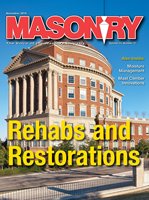 Masonry Magazine
Masonry Magazine
November 2016
In a multi-phase process that reached completion in April 2016, Kansas State University undertook a program to revitalize and repurpose Memorial Stadium. The project involved a complete gut and renovation of both wing buildings below the stands. The west wing now serves as a campus theater, and the east wing is a new location for student services, financial aid, housing and dining services, and the career center. One unusual challenge in the project was how to rehabilitate the concrete risers above the revitalized structures. Since the stands had always served as roofs to the buildings underneath, that function had to remain, though they no longer needed to account for 17,500 screaming Wildcats fans. K-State’s landscape architecture department proposed transforming the majority of the seating into green roofs. Planted with native materials, the green roof provides an ideal way to reseal the structures, while enhancing the stadium aesthetically and making a strong environmental statement.
Because current building codes wouldn’t allow a tremendous amount of weight to be added to the roofs, designers turned to ACH Foam Technologies’ Foam-Control EPS Geofoam, an innovative commercial building product that is about 1 percent of the weight of natural soil. ACH’s specially engineered expanded polystyrene (EPS) foam offered a lightweight material capable of filling in the slopes created by the rows of seating without overburdening the structural capacity of the roofs.
Read More.
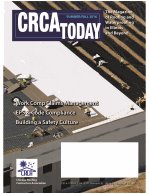 CRCA Today
CRCA Today
Summer/Fall 2016
All of us involved in the commercial roofing business in Illinois by now are well aware of new 2015 International Energy Conservation Code (IECC) requirements. These new requirements are creating challenges for roofing contractors and also driving up the cost of new or replacement roofs for building owners and managers.
At the same time, we are learning new information about Polyisocyanurate insulation (polyiso), its R- value and how it is impacted by temperature. These two factors have created a “Perfect Storm” of higher costs for roof assemblies. Now, more than ever, would be a great time to look at the advantages of Expanded Polystyrene (EPS) in roof assemblies.
For over 50 years, EPS insulation has played an important role in the roofing industry. In the 1970’s, as the use of EPDM single ply membranes grew, so did the use of EPS tapered and flat insulation. Since the early 1980’s, how EPS is used in roof assemblies has changed. This was largely due to the membrane suppliers started manufacturing their own polyiso. While many membrane manufacturers have private label agreements with EPS insulation manufacturers, providing their own polyiso with their membrane is now the most common practice. Read More.
 Roofing Contractor
Roofing Contractor
September 2016
In business there is no substitute for efficiency. In large businesses efficiency is an earned commodity. For Uline, North America’s largest distributor of shipping and industrial packaging materials, efficiency is the result of carefully considered, tested, and refined operations involving a complex web of interconnected people, parts, and processes. With more than 22 years in the field and 11 years with Uline, Randy Copenharve, Uline’s director of facilities and construction, recently oversaw construction of a new 1 million square-foot distribution center at Uline’s Wisconsin headquarters.
Completed last January, the facility known as W2 is a state-of-the-art distribution center that Copenharve believes is the best organized of all of Uline’s facilities. Since building on past experience is key to efficiency in so many ways, W2 is largely a duplicate of its predecessor W1, including many important design and construction material decisions. One key decision on such a large, open floor plan facility was thermal insulation to guard against Wisconsin’s dramatic annual temperature swings. With summer temperatures reaching into the 90’s and as low as minus 40 in the winter, cost-effectively maintaining Uline’s desired working conditions in such a large building relies on premium quality insulation.
Read More.
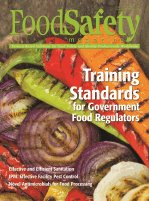 Food Safety Magazine
Food Safety Magazine
August-September 2016
While the idea of sustainability has moved past the novelty phase that felt like a buzzword trend a decade ago, the need to continue to look for meaningful ways to further reduce the constant stream of waste sent to landfills remains. The Foodservice Packaging Institute (FPI), a North American trade association composed of manufacturers, suppliers, distributors and operators/retailers in the foodservice and packaging industry, has launched a new initiative that takes an important step in ensuring valuable reusable materials are recycled instead of sent to landfills.
In 2014, a dozen members of the FPI came together to establish the Foam Recycling Coalition (FRC) to provide direct support for the increased recycling of foodservice packaging made from expanded polystyrene (EPS) foam. Foodservice industry items made of EPS foam include the cups, plates, bowls and carryout containers we’re all familiar with. However, when considering that items like meat packages and egg cartons from the grocery store are often made from the same polystyrene foam, it is just as important to recycle these materials as it is to recycle plastic bottles. With this in mind, in 2015, the FRC, in association with the EPS Industry Alliance, announced a new grant program to help businesses in the recycling industry increase their capacity to accept postconsumer EPS foam products.
Read More.
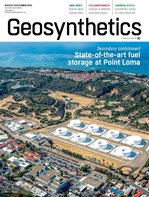 Geosynthetics
Geosynthetics
August 2016
As those in the design and construction community know well, every project is slightly different from the last regardless of how many times similar challenges have been faced. When it comes to heavy civil construction involving the ever-so-delicate restoration of a natural wetlands area, those differences can be magnified significantly by the specific soil conditions at the project site. For Scott Ghilotti, vice president at Maggiora & Ghilotti Inc. of San Rafael, Calif., finding solutions to complex problems proves to be one of the most rewarding aspects of any project.
The Cullinan Ranch project involved reinforcing a roadway levee along two miles of Highway 37, which runs adjacent to the wetlands and just a few miles from San Pablo Bay. To re-create a wetlands area that was naturally inviting to fowl and other wildlife, the U.S. Fish & Wildlife Service wanted to mimic the transitional zones between the wetlands and highway, which meant adding a significant volume of material to accommodate a gentle slope from the elevated levee to the wetlands. During the design stage, engineers from Ducks Unlimited proposed the use of expanded polystyrene (EPS) foam (geofoam) as a structural fill because of its light weight and high compressive strength.
Read More.
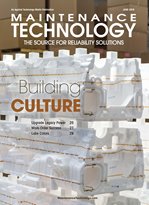 Maintenence Technology
Maintenence Technology
June 2016
It's made from 98% air, but it can provide support for a multi-level parking garage. It protects highly sensitive electronic equipment; insulates the foundation, walls, and roofs of skyscrapers; supports the infrastructure of railway systems; and can keep food and medications at just the right temperature. Expanded polystyrene (EPS) is a lightweight, rigid, closed-cell material that withstands load and backfill forces, minimizes water absorption, and is a sustainable product that can be recycled again and again.
For more than 40 years, ACH Foam Technologies has been a leading manufacturer of EPS for construction, geotechnical, packaging, and industrial applications. From its nine locations in eight cities across the United States, the family-owned-and-operated company has the capacity to produce 80-million pounds of foam annually. “We like to say EPS foam is engineered air. This is the magic of our product,” said Todd Huempfner, Vice President of Operations. “We focus a lot of our energy and effort around front-line employee engagement and empowerment. We understand the cornerstone of the roadmap to our future. Our biggest focus is building and maintaining a winning culture. This starts with continuous improvement, so we have made a significant investment in this,” said Huempfner.
Read More.
 School Construction News
School Construction News
June 2016
Founded in 1863, Kansas State University (K-State) in Manhattan, Kan., was the first public institution of higher learning in the state. When Memorial Stadium was constructed as a tribute to Kansas State students killed in World War I, the formidable stone structure fit right in. Composed of two independent halves, west stadium (completed in 1922) and east stadium (completed in 1924), Memorial Stadium's general seating capacity was 17,500. With the passage of time, infrastructure deteriorates and eventually,if left unresolved, it will become a danger. Recognizing the stadium's historic significance in its football heyday and as a campus haven in the decades since, the university undertook a program to revitalize and repurpose Memorial Stadium in a multi-phase process that reached completion in April 2016.
On both the east and west side of the stadium, one interesting challenge K-State faced during early design discussions was what to do with the concrete risers above the revitalized structures. Since the stands had always functioned as roofs above each building, that purpose had to remain. "Initially. the thinking was to patch the concrete and then cover the stands with a layer of soil to develop the desired contours." said Sean Zaudke, vice president with Gould Evans, the Kansas City, Mo.-based architecture firm hired to lead the west stadium's transformation. "However, when the structural loading report came back it was clear we couldn't add a tremendous amount of weight to the roofs and still comply with today's building code requirements," Zaudke explained. In response, the team turned to an innovative commercial building product, ACH Foam Technologies' Foam-Control EPS Geofoam. At about 1 percent the weight of traditional earth materials, engineered expanded polystyrene (EPS) foam provided a lightweight material capable of filling in the slopes created by the rows of seating without overburdening the structural capacity of the roofs.
Read More.
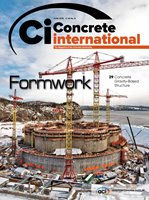 Concrete International
Concrete International
June 2016
General contractors WW Clyde of Springville, UT, recently completed the Cheyenne South Valley Connector in Pocatello, ID. The project comprised a new two-lane roadway connecting the east and west sides of Pocatello. The roadway’s main feature is a 430 ft (131 m) long bridge that traverses the Portneuf River, six sets of active railroad tracks, the town’s South 2nd Avenue, and several bike and pedestrian paths. ACH Foam Technologies’ Foam-Control EPS Geofoam, a high-strength expanded polystyrene (EPS) foam product frequently used as a lightweight structural fill on geotechnical projects, was used to create the formwork required to shape the bridge’s concrete piers. The WW Clyde team worked closely with ACH Foam Technologies’ engineering staff to develop drawings for the formwork.
Read More.
 Civil + Structural Engineer
May 2016
Civil + Structural Engineer
May 2016
Mark Konrardy, Plant Manager of Badger State Fruit Processing had two criteria when selecting insulation for the company’s 2016 cold storage expansion: long-term R-value performance and high compressive strength. Working closely with ACH Foam Technologies, Badger State’s design team developed a layering system that met the R-value and compressive strength requirements yet still managed to further reduce overall construction costs.
Nearly identical to the 2012 expansion, the new cold storage facility required six inches of insulation to achieve the target R-value. Structural engineers revealed the design only required 2 inches of Foam-Control PLUS+ 400 at 40 psi. Engineers then selected a two-layer system combining 2 inches of Foam-Control PLUS+ 400 on top of a 4-inch layer of Foam-Control PLUS+ 250. By using two densities of material, they were able to save the project more than $54,000 compared to the cost of a 6-inch layer of Foam-Control PLUS+ 400 exclusively, a savings of 13 percent.
Read More.
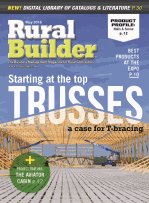 Rural Builder
May 2016
Rural Builder
May 2016
How to cost-effectively nestle a building into a hillside was a problem facing Peter Sh errer, owner of PSG, a Wisconsin based firm specializing in real estate and construction. The building in question was a new 55,000 square foot office and distribution center for Wisconsin Vision Associates of Burlington.
Early design investigations into different structural engineering systems capable of supporting both the building’s pre-cast wall panels and the weight of the hillside were cost prohibitive until the structural engineer suggested the possibility of using Foam-Control EPS Geofoam, a cellular plastic material from ACH Foam Technologies.
Read More.
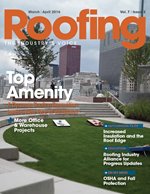 Roofing
March/April 2016
Roofing
March/April 2016
Investing more than $85 million into building renovations, Prudential Plaza’s owners envisioned a top-tobottom rehabilitation, crowned by a 13,000-square-foot amenities deck on the 11th floor. The rooftop transformation is highlighted by a fully wired amphitheater, fire-pit lounge and a small lawn accompanied by a new 12,000-square-foot fitness center and a 7,000-square-foot clubhouse located inside. These amenities are exclusively for building tenants and their employees. Kyle Kamin, a Los Angeles based CBRE Inc. executive vice president and tenant broker who has clients in Prudential Plaza called the roof deck “a game-changer with an unbeatable view.”
On the Prudential Plaza roof-deck renovation, two types of EPS were used. EPS 15 was used in areas that would largely be filled with plants and wouldn’t bear much foot traffic. EPS 46, chosen for its high compressive strength, was used as a structural fill across the design’s many grade changes and in areas that would bear more weight of roof-deck occupants. For Joya, another advantage of using the EPS is being able to see the shape of the assembled product and make any required changes before the concrete is poured and work becomes significantly more complicated.
Read More.
 Recycling Today
March 2016
Recycling Today
March 2016
Sustainability is more than just a buzzword; it also is the notion that we as a society must continue to look for meaningful ways to reduce the constant stream of waste that is being sent to landfills.
Generally, in the past the bulk of EPS recycling efforts has focused on industrial sectors where commercial product distributors and vendors recycle large volumes of material collected from protective packaging products such as refrigerators or televisions.
Read More.
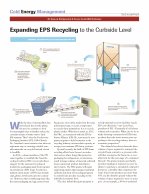 Refrigerated & Frozen Foods
January 2016
Refrigerated & Frozen Foods
January 2016
In 2014, a dozen members of the FPI came together to establish the Foam Recycling Coalition (FRC) to provide direct foodservice packaging made from expanded polystyrene (EPS) foam. Foodservice industry items made of EPS foam include cups, plates, bowls and carryout containers.
Up until recently, the bulk of EPS foam recycling efforts have focused on industrial sectors where things like protective packaging for refrigerators or televisions result in large volumes of material collected from commercial product distributors and vendors. The FRC grants will target supporting entities that manage residential curbside and drop-off recycling programs to extend foam product recycling to the individual consumer level.
Read More.